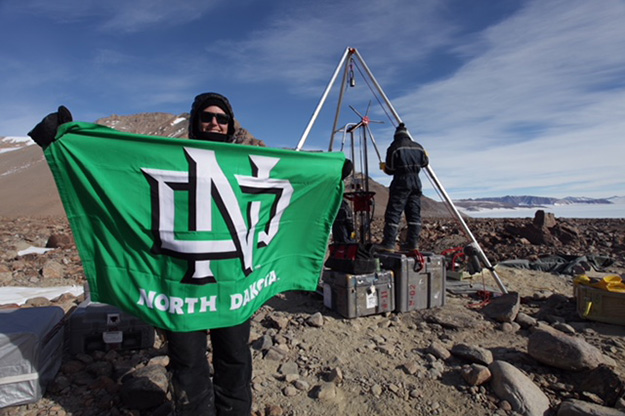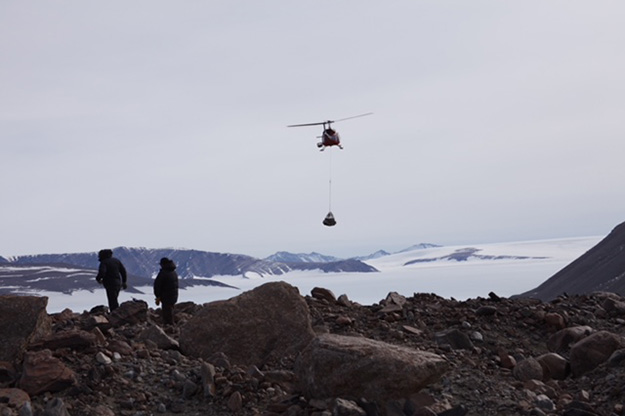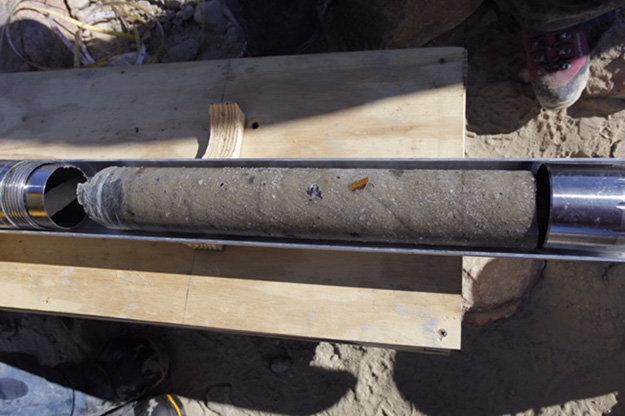The oldest ice on earth?
UND geomorphologist Jaakko Putkonen continues the hunt in Antarctica

Moving a large drilling rig by helicopter was one of Jaakko Putkonen’s major challenges in his latest expedition to Antarctica, completed early this year.
“It took a whole day to take it down and move it to a more remote location from where we started,” said Putkonen, a geomorphologist and director of the UND Harold Hamm School of Geology & Geological Engineering. With doctoral student Marie Bergelin, Putkonen and his team of colleagues and students from other universities were on the coldest continent to extract ice cores from a desert-like valley where there’s little snow cover.

“We received funding from the National Science Foundation to drill a massive ice body hidden under two feet of dirt to obtain samples of the interior of this glacier to establish its age without any hesitation,” said Putkonen, an experienced cold zone researcher. “We have dated the dirt on top of this ice, which by definition is younger than the ice itself; now we want to date the ice.”
The ice cores extracted this trip have a long journey to UND from the valley, first by military transport plane to the U.S. research station at McMurdo, Antarctica, then by ship to California, then by refrigerator truck to North Dakota.
This expedition was a first for Bergelin, who is from Denmark. She’s working on a Ph.D. in Geology, likely following Putkonen’s path into geomorphology, which studies current and past changes in the Earth’s surface.

The next step: establish the age of the ice to determine if this is indeed the oldest ice on Earth.
Why is “oldest” significant?
“It’s a stepping stone to understanding changes—current and past—in the Antarctic environment,” Putkonen said. “This will add to our knowledge about changes in the Earth itself and to phenomena such as climate change.
“Let’s not forget that 20,000 years ago, we had a mile of ice over this part of North America,” Putkonen said. “And 11,000 years ago we were under several hundred feet of water—glacial Lake Agassiz.”


